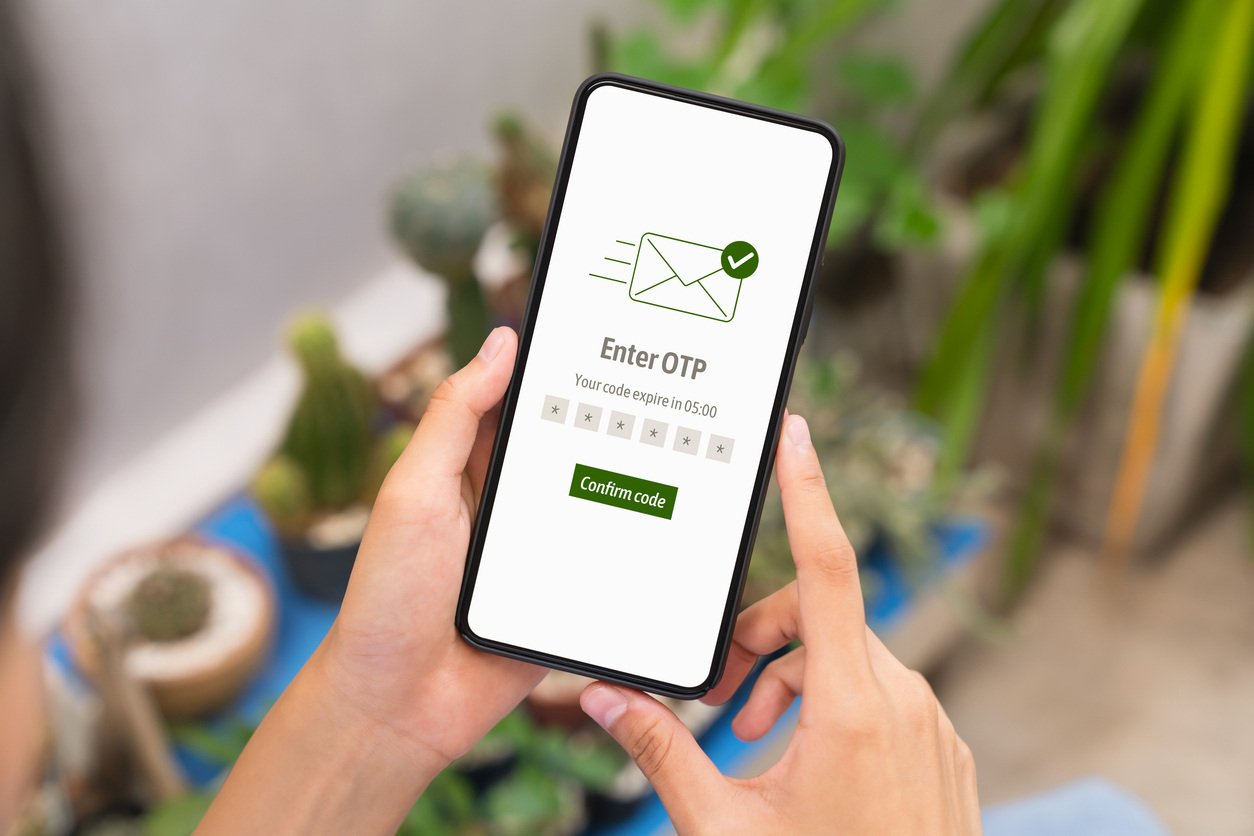
When security meets convenience, the stakes are high. With cyber threats on the rise, one-time passwords (OTPs) play a critical role in preventing unauthorized access, but what happens when they don’t arrive on time — or at all?
The 2024 Verizon Data Breach Investigation Report highlighted that 31% of all breaches over the last decade involved stolen credentials. As a result, organizations and individuals are moving towards protocols such as multi-factor authentication (MFA) leveraging one-time passwords (OTPs).
However, OTP messages are often email or SMS-based, and both channels are prone to delivery failures. In this article, we’ll analyze the key reasons behind OTP failures and identify the best ways to improve delivery because OTPs are key to brand perception, reliability, and security.
OTP messages are time-sensitive alphanumeric codes sent to customers to verify their identity. OTPs can be used across many instances, such as:
OTPs can be sent via SMS, email, WhatsApp, or push notifications, and delivery success or failure rates vary by channel.
Source: MoEngage Inform
Have you ever tried logging into an account only to be left waiting for an OTP that never arrives? Frustrating, right? OTP messages play a crucial role in keeping things secure and seamless. But when they fail to deliver, it’s more than just an inconvenience - it can disrupt business operations, frustrate users, and even lead to security risks.
Before we jump into the reasons for delivery failure, let's take a look at the consequences of OTP delivery failures.
If OTPs are undelivered, brands cannot verify customer identity. This creates a chain reaction, starting with customer experience. Customers will get frustrated and lose trust in your brand's security system. They might try an alternative access management solution, request another OTP, or try to bypass your verification protocols, resulting in serious security breaches. Over time, your customers will stop using MFA or two-factor authentication (2FA) and resort to weak passwords that are gullible to phishing attacks.
Government regulations in most countries require brands to deploy extensive privacy and security practices. Since OTPs are a core aspect of multi-factor authentication, failure to deliver OTPs might compromise sensitive customer data and put your brand at risk of failing mandatory regulations.
Imagine that an important shipment is arriving at the customer's doorstep, but the OTP for them to receive it has failed. Or worse, imagine a customer trying an urgent payment or login session, but the OTP for verifying that has failed.
OTPs are used for critical customer use cases, and failure to deliver these causes immense frustration and breaks the flow of their journey. Over time, customers will abandon the purchase or transaction and churn from your brand.
Now that we've understood the negative impacts of the failure of OTP deliveries, let's analyze the reasons for failure.
Source: MoEngage Inform
While most OTP deliveries are channel-dependent, other reasons for delivery failures include:
Regardless of the many reasons for OTP delivery failure, brands can adopt strong practices to ensure better delivery. Let’s dive into a few of them.
While certain channels may be more prone to OTP delivery failures than others, there are a few measures you can take to prevent such incidents.
It's never a good idea to put all your eggs in one basket, especially for something as critical as transactional messaging or OTP delivery. If one channel fails to deliver your OTP, your infrastructure should be set up in a way that automatically falls back to the next available channel.
For example, if you're trying to send OTP via email and the email fails due to an unforeseen issue, your system should automatically switch to the next fallback option, such as an SMS OTP.
Source: MoEngage Inform
Here's how having a multichannel fallback mechanism will help:
By setting up your system to have multiple fallback options, you can ensure that your customers receive OTPs irrespective of channel-dependent failures. This reliability is critical for time-sensitive transactional messages and ensures that customers are always happy with their experience.
Channel fallback processes should also be automated, requiring minimal human intervention. That way, failures on one channel don't disrupt any flow, and an existing alternative can be used. This reduces the need for manual intervention, which further reduces the chance of OTP delivery errors.
The cost of sending messages across each channel varies based on geography and usage. For example, email notifications cost less than SMS messages, and push notifications are entirely free of cost. To optimize your budgets, you should split your OTP delivery between channels based on their criticality and time-sensitive nature. For example, you can send delivery OTPs via push notifications, banking OTP via SMS, and transaction confirmation OTPs via email.
Having a multi-channel delivery infrastructure can allow you to provide customers with preferential options. Depending on the situation and urgency, they can choose the channel through which they wish to receive the OTP. This will boost customer experience and allow the customer to choose whichever channel works best for them at the time.
Similar to a multi-channel setup, employing multiple vendors for each channel is also essential. While this might feel cumbersome, it ensures better delivery of OTP notifications. Dependency on a single vendor might be easy, but it is a recipe for disaster.
Source: MoEngage Inform
Here's how a vendor fallback mechanism helps:
Even with the best vendors, downtime is inevitable. If all your critical OTPs depend on that vendor, your system will fail, and your customers will not receive their OTPs.
To prevent this, you should always include multiple vendors in your tech stack. For example, your 2FA providers and infrastructure should be integrated with at least two vendors for email and two for SMS. That way, even if one email vendor faces downtime, you can immediately and automatically use the alternative vendor.
The volume of OTP requests might fluctuate across time and systems. If you distribute your request load across different vendors, you can optimize the delivery without overloading a single one. This way, even if one vendor poses certain limits in terms of load and peak, you will have alternative vendors to fall back on.
Even if the vendor is able to handle peak loads, servers sometimes create limits to control the system. If your infrastructure has multiple vendors available, you won't be dependent on server-side limitations and might never even breach these limits.
Like with any other customer-facing system, monitoring and analytics should be a core aspect of your systems and processes. The same applies to OTP deliveries as well. You should implement analytical mechanisms to receive delivery status updates and notifications.
Source: MoEngage Inform
Here are the most important metrics you can track to ensure reliable OTP delivery:
While some OTP failures are unavoidable, businesses can minimize disruptions with the right strategies. Let’s explore the best practices for ensuring OTP delivery.
OTPs should ideally arrive within 1-2 seconds of a customer requesting them. This means that the entire process of verifying the customer's credentials, generating a unique alphanumeric code, and getting the message delivered to the customer should happen within this time.
Your infrastructure, whether inbuilt or outsourced, should be able to handle instantaneous OTP delivery during both peak and load times.
"Test, test, and test again," said Adi Dassler, the founder of Adidas. This practice extends to any product or engineering effort, including critical OTP delivery.
If you're working with an inbuilt solution, as a standard practice, keep testing your systems and infrastructure. Perform regular unit testing, integration testing, functional testing, and acceptance testing. Also, make sure to perform white-box and black-box testing at periodic and random intervals.
This will help you optimize your infrastructure and ensure reliable delivery. If you're working with an outsourced solution, the solution's software team will take care of this.
Each vendor or channel that you work with will go live with updates regularly. To keep up with this pace of releases, your team will have to push system maintenance via regular patches and updates as well. Your infrastructure will otherwise be buggy, and your integrations will become unreliable, leading to failed deliveries.
Similar to the above step, this only applies if you're working with an in-house solution. With outsourced or third-party platforms, this isn't a concern, as the platform will make sure to take care of this.
Your OTP delivery infrastructure should also collect and store audit logs and failure reports as a mandatory process. This helps in two ways:
Source: MoEngage Inform
When it comes to content, readability is of the utmost importance. The OTP code has to take center stage and be digestible immediately.
Here are some best practices you can follow for the content:
While SMS OTPs don't require design, your email, WhatsApp, and push notification OTPs would draw heavy reliance on design. Much like content, you can follow a few basic rules for the design to improve convenience and delivery.
Source: MoEngage Inform
While the OTP is an added layer of security for important actions and sometimes high-stakes transactions, there are chances for OTP leakage.
This happens when the OTP message falls into the wrong hands and compromises system and customer security. This can happen in multiple ways, such as SIM swapping, phishing attempts, or social engineering. In some cases, hackers can even send false "OTP failure" messages to customers while they intercept the real OTP on their end.
If you're working with an in-house solution, you should dedicate specific resources to ensuring the privacy and security of your delivery infrastructure.
On the other hand, if you're working with an outsourced solution, make sure to validate the security and privacy practices of the third-party solution. Find out how many local and international compliances and security certifications they have incorporated, and understand the implications of lapses (if any).
Here are some more ways to ensure privacy and security for your OTP infrastructure:
It is easy to overlook the benefits of MFA or OTPs and take them for granted because they are so common. However, the reality is that OTPs are the most critical notifications and immediately impact customer experience, brand image, customer retention, and government compliance.
The consequences of a failed delivery are multi-fold. By focusing on the different aspects mentioned in this article, like delivery system security, fallback mechanisms, failure reports, instantaneous send time, and content formatting, you can ensure successful OTP deliveries and a good customer experience.
Are you struggling with SMS reliability? The right platform makes all the difference. Check out the tried-and-tested best SMS marketing software.
Edited by Supanna DasRamita is a tech marketer at MoEngage with a knack for creative storytelling. She enjoys bridging the gap between people and brands through the power of language. Off the clock, she’s either gaming, traveling, or playing fetch with her dog.
Data loss, no matter the cause, is a threat to organizations. The 3-2-1 backup strategy helps...
 by Praveen E
by Praveen E
Modern business continuity hinges on the reliability of technology.
 by Sagar Joshi
by Sagar Joshi
Data loss, no matter the cause, is a threat to organizations. The 3-2-1 backup strategy helps...
 by Praveen E
by Praveen E
Modern business continuity hinges on the reliability of technology.
 by Sagar Joshi
by Sagar Joshi



